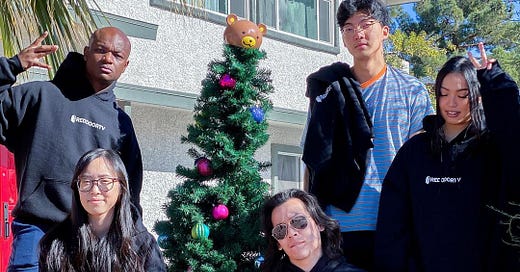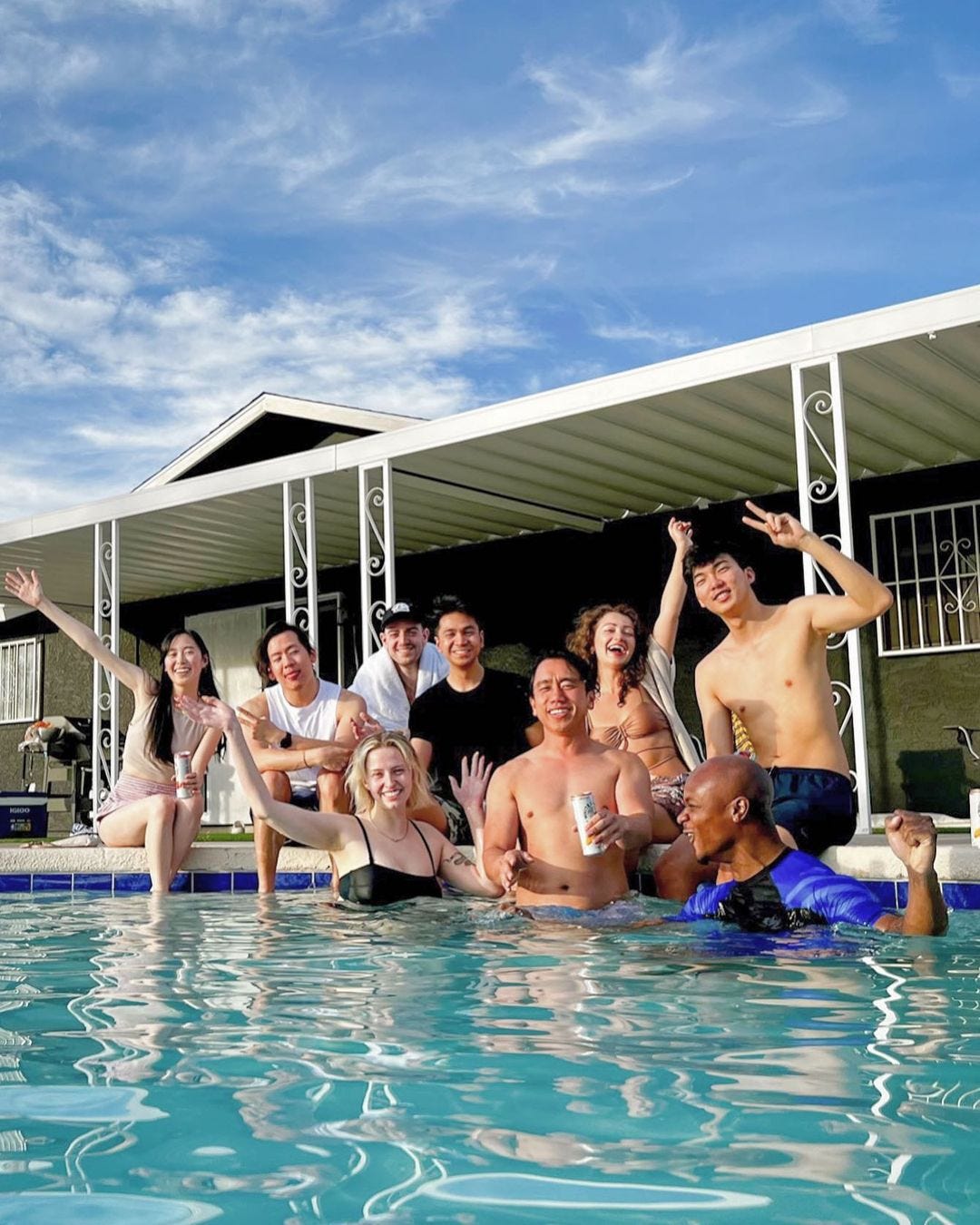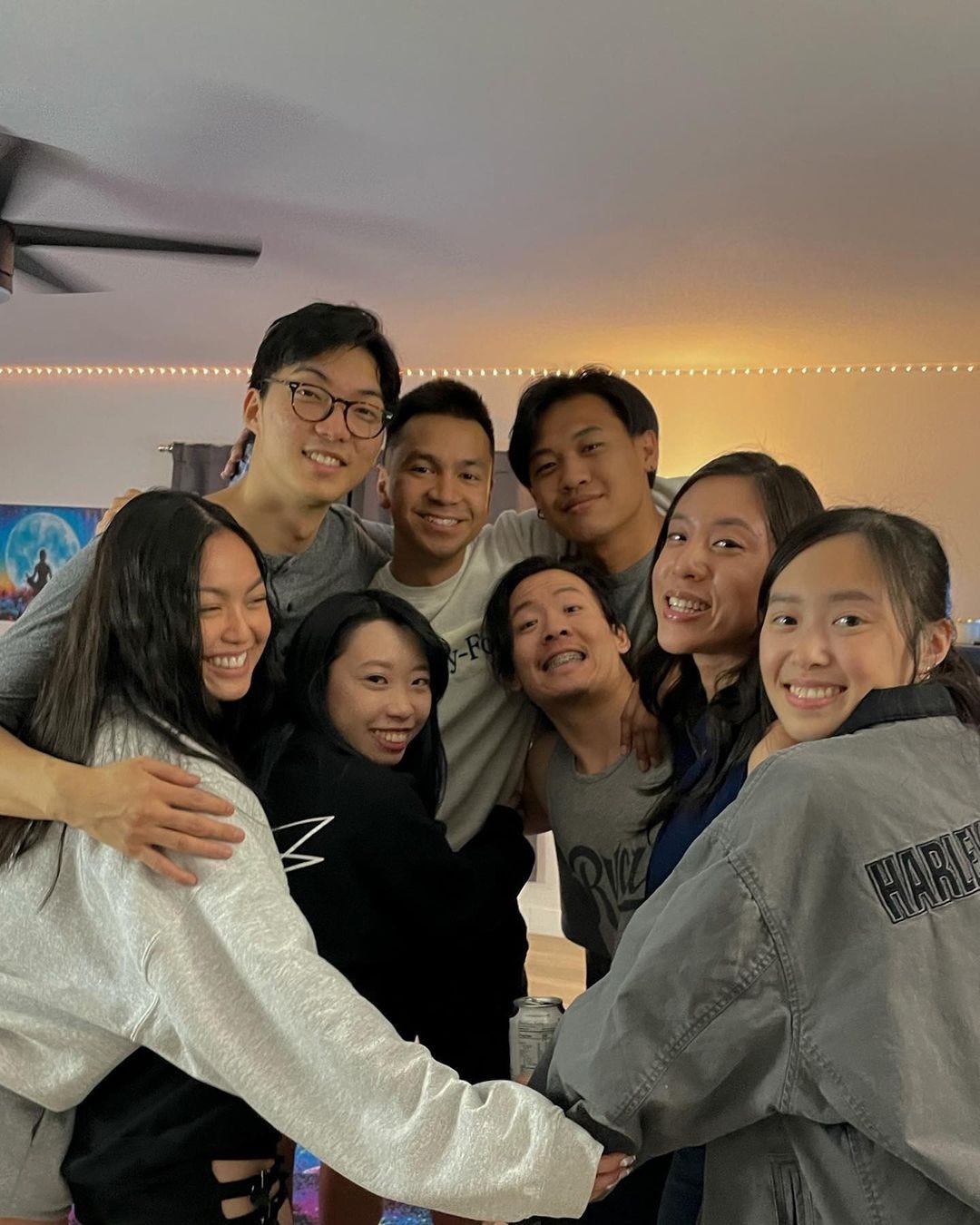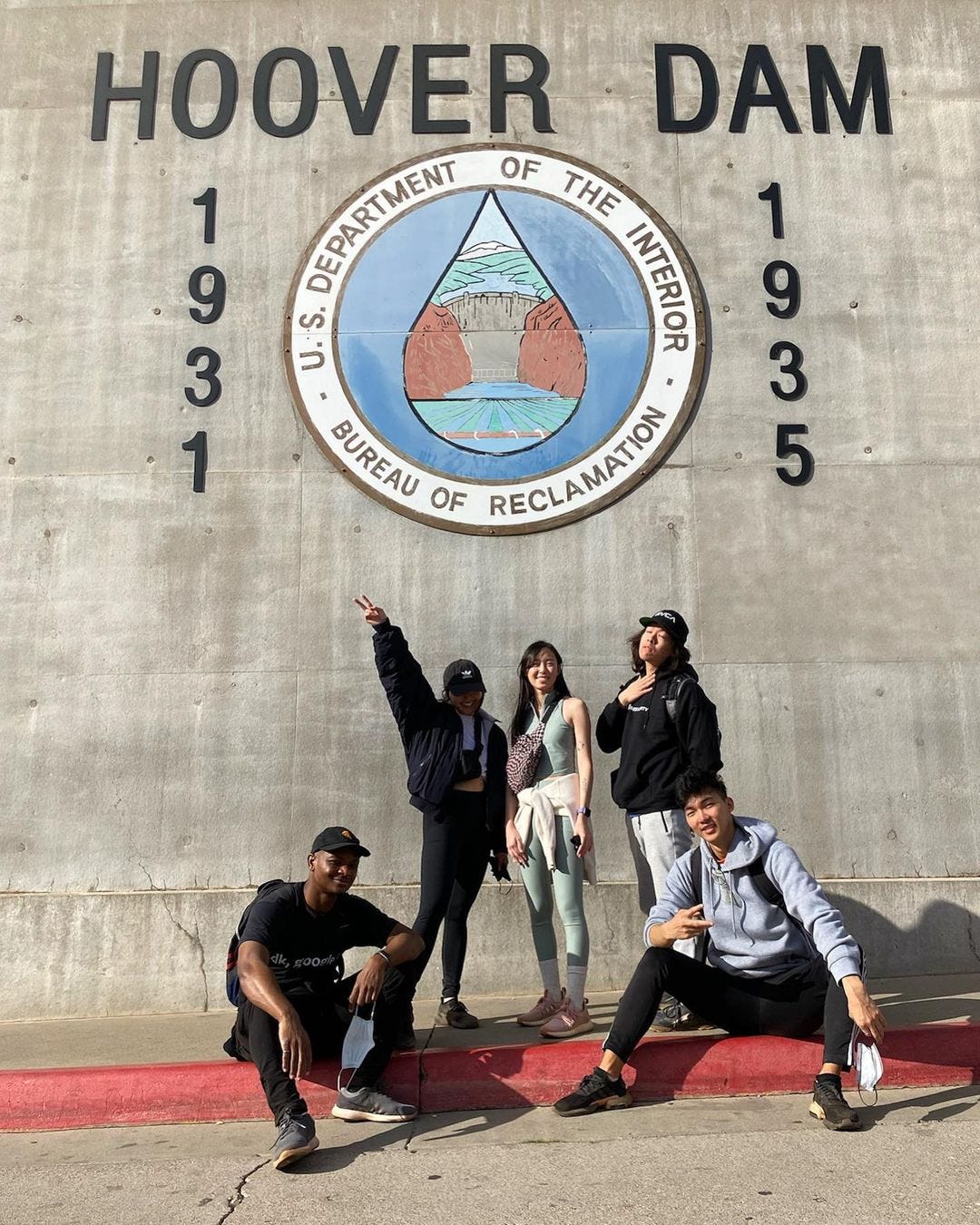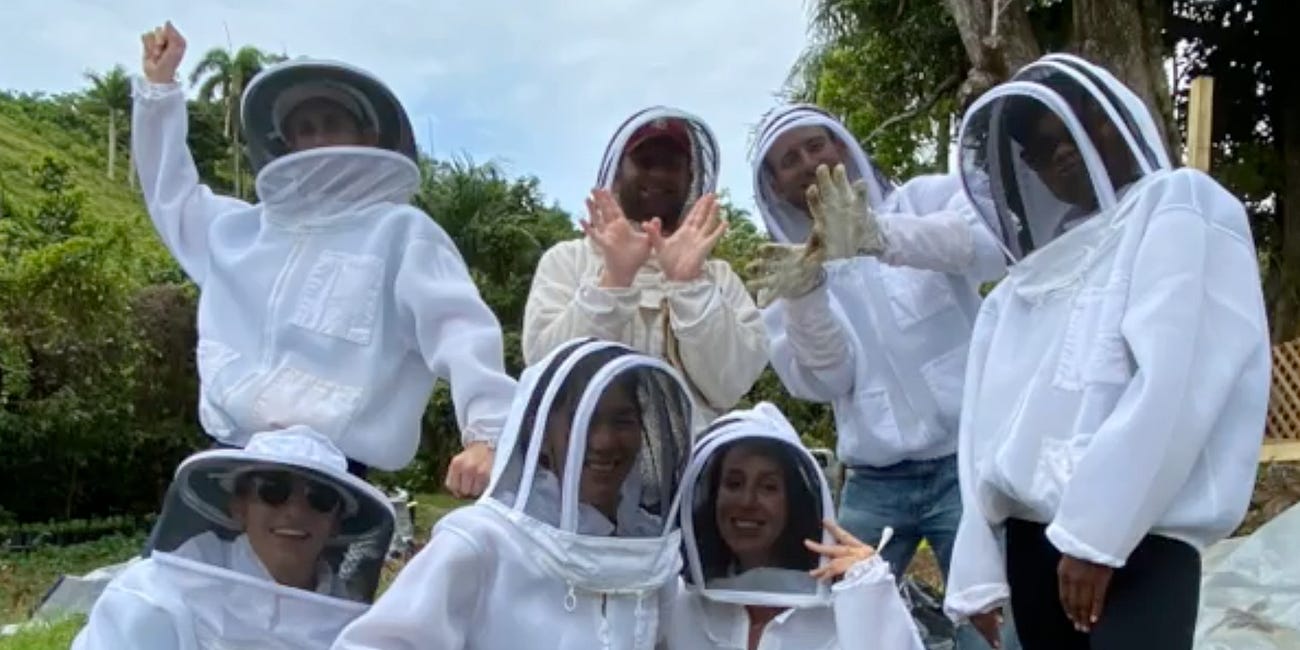Editor’s note: this is a reader-submitted case study from Marco Chiang, a movement artist, content creator, and community builder.
There’s a rich history of people living together to advance their professional goals, from writer’s retreats to hacker houses. We’re grateful to have this deep dive into how and why Marco Chiang set up the legendary Red Door TV.
This is part of an ongoing series of case studies on coliving spaces. To see others, visit the Supernuclear directory. If you want to contribute a case study of your community, awesome! Please find guidelines for submission in this post.
Name: Red Door Television (@reddoortelevision) YouTube: https://www.youtube.com/@RedDoorTV21
Date founded: 2021
Location: Las Vegas
Rented or owned: Owned
Amount of space (number of beds/baths, any notable amenities): 5 Bedrooms, 4 baths
Governance: Benevolent dictatorship: I took care of everything mostly because I wanted to let everyone focus on their creative careers (I bought a house to support content creators/artists).
Origins
During the pandemic a lot of my friends moved into a beautiful historic neighborhood in Vegas and convinced me to buy a house there to join the community. I pitched this idea of starting a content/creator co-living situation to a Facebook group of over 50,000 members and 500 people applied to live with me. I handpicked 10-15 people after some video interviews and we started meeting weekly for creative feedback sessions and show and tells. After 3 months of intimately getting to know each other over 8+ hour video sessions, game nights, movie nights, and co-working sessions at the peak of the pandemic, 4 people decided to move to Vegas with me and together with the existing community, we built Red Door TV. I've always wanted to be a content creator (I grew up on youtube) so I was seeking fellow social media artists. I value diversity so in the end, our skillsets ranged from fine art, music, singing, dancing, 3d animation, modeling, entrepreneurship and more.
Inner workings
I hired a house cleaner once a week. Chores were volunteer based like taking out the trash but we would list all of our house deeds on a white board on the fridge so we could see who was contributing to the house the most. I bought red shame bells (GoT reference) to shame the one who contributed the least each week as a joke but we never actually ended up using the bells. This video of one of our house meetings shows a bit more about how our chore management worked.
We would make Costco runs and for those who wanted in on bulk items and we would split the groceries evenly. We didn't monitor who ate how much of which since it never became a problem.
I collected base rent every month and no more from everyone while I covered most house excursions / experiences for our social media channels. There has been relatively little turnover of housemates, except one shift I’ll talk about below. Generally if someone left we would pull in from other members of the virtual or local community. I held virtual feedback sessions to continue growing the community of artists/creators and acted as a sideboard of people to pull in. We also hosted a lot of creators traveling to Vegas as well as parties to meet more folks. The more time we would spend together the more confident we would become of them as a potential housemate.
The name Red Door has origins meaning a safe place welcome to travelers. We built a very inclusive culture and on top of hosting weekly/monthly gatherings I tried to expand the circle by inviting other types of creatives including local circus performers. I even began hosting couchsurfers from other countries to introduce the house to different cultures and even started a video series interviewing guests about their home. One highlight was a guest from India who was hilarious and we had such a fun time hanging with them and teaching them dance moves while he showed us some indian cuisine:
Because it was a content house I hired a videographer and social media manager to come by a few times a week to come up with ideas and bring the house together to film light but fun content as a house. Our videographer filmed weekly vlogs for us while we went on a house excursion; going to get piercings together etc… This made it easy for us to have consistent bonding activities. This also allowed for friends of ours to visit often and collaborate on ideas.
Lessons learned
It was the closest I’ve ever been with a group of people before but it was also challenging because of everyone’s difference in communication styles. A singular incident or person can divide the whole community and cause it to fall apart. The first year was a complete success but in 2022 a housemate’s behavior and lack of communication caused the domino effect of splitting members apart. We would often find ourselves arguing over this one person because they had been a crucial part of forming our community and were suddenly disappearing for days at a time.
In short, their life situation had changed and they chose to prioritize their own needs over the needs of the community, which caused escalating tension between us as I was the landlord and they had broken some lease agreements. It was a difficult but educational experience to balance empathy for a friend with the community’s need for stability. I eventually asked the person to leave and they agreed to do so.
Moving forward I decided to seek out housemates who are more independent and required less hand holding whether it came to communication or conflict resolution. I used to get too involved and tried solving too many people’s problems as the house lead.
Red Door recovered and the second generation has been there for almost 2 years now. I focused this time on finding established creatives who I’ve already known from my year exploring the communities of Las Vegas. They were much more independent and I felt very little need to intervene as the group had mostly already known each other from dance and performative communities. It’s a self sustaining group right now and since I had to move back to SF for work I’m no longer an active house lead but I do visit once/twice a month to check in on everyone. Red Door remains a safe place for creatives to visit and collaborate with one another.
Thanks Marco for sharing your story! Curious about coliving? Find more case studies, how tos, and reflections at Supernuclear: a guide to coliving. Sign up to be notified as future articles are published here:
And you can find the directory of the articles we’ve written here.
Suggested further reading:
Fairness is overrated and bragging is underrated
This particular lesson has shifted my worldview significantly. It’s something I’ve learned in coliving environments, but I believe it applies to most groups. Consider the chore wheel It’s pretty straightforward how the chore wheel came about. There are things that need to get done in a community.
Really, we're not a cult
What makes coliving different from just living with roommates? The most common line is that coliving involves a level of intentionality: we’re choosing to live together not for convenience or cost savings, but because we want to live communally. This means sharing resources, trying to do things that are best for the group rather than getting the most va…

